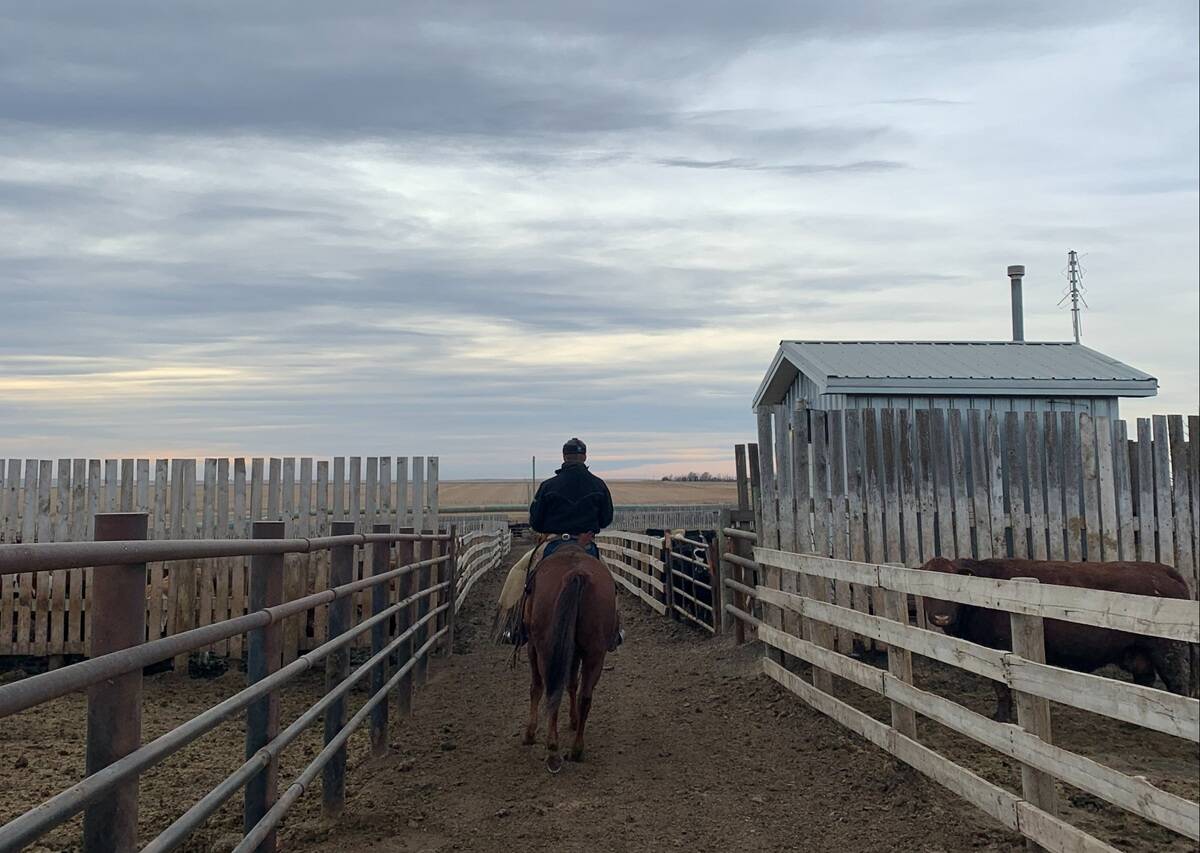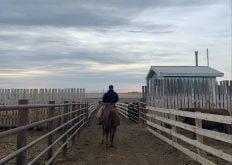When Tom Harrison, project manager for the Saskatchewan Stock Growers Foundation, began looking into conservation easements in Saskatchewan, he mainly heard skepticism from producers.
“We’ve been talking to producers in southwest Saskatchewan about easements. And what we’re finding is that there’s probably hardly any interest whatsoever in producers signing perpetual conservation easements on their land,” he says.
From there, the idea of term easements was born.
Read Also

Pen riders still better than tech at detecting respiratory disease in feedlot cattle, says researcher
Recent research found that pen riders are better than tech at flagging signs of BRD in feedlot cattle
The Saskatchewan Stock Growers Association, in partnership with the South of the Divide Conservation Action Program Inc, recently announced that they have secured funding for term conservation easements. That funding will allow producers to enter an agreement for a minimum of 10 years and protect any native grasslands they may have on their land during that time, as well as the species that live there. Previously, only perpetual conservation easements were offered, something many producers didn’t want to commit to.
While the term easement will only conserve the land for the time agreed upon, Harrison says that doesn’t mean the grasslands will be at risk once the easement is up. Instead, it allows the producers to protect their interests.
“If you sign up for one for 35 years, you’ve got the land conserved for 35 years, you’ve got legal protection on it, and it’s a generational thing. Then you’ve got that generation of the producers committed to retaining the grassland there. And then what it does is, at the end of the term, it allows the next producer or the next generation to renegotiate and get some benefit from it. If it’s coming from a ranching-type family or a cattle-producing family, chances are, you’re going to continue with it.”
The restrictions on the land for the easements are very few.
“The only restriction on the land is that you can’t break it or you can’t develop it,” Harrison says.
“We are saying that we will invest funding into these projects, for further management, but that that management agreement will not be tied to title and will not be tied to the conservation easement. The only restriction again on easements that will go on title is that you can’t break it.”
The Canadian Cattlemen’s Association has also been working towards creating term conservation easements for landowners — something they have met with the Saskatchewan Stock Growers Foundation many times to discuss.
Something similar is happening in Alberta as well. Karen Yakimishyn, term conservation easement coordinator for the Species At Risk Partnerships on Agricultural Lands pilot project, is leading a working group that consists of the Alberta Conservation Association, Southern Alberta Land Trust Society, Alberta Beef Producers and Environment and Climate Change Canada. In March of 2021, they were given funding for two years to create a term conservation easement.
“Part of the project will be working with the landowners to develop an easement that balances their needs with what the requirements of a term conservation easement would be,” Yakimishyn says. “Right now, one of the biggest questions is what value do we place on the land? And so really, that valuation needs to recognize the high conservation value of lands with critical habitat for species at risk. And that’s a bit different than traditional easements.”
Like Saskatchewan, producers in Alberta shy away from perpetual easements. Yakimishyn said she hopes term easements provide an avenue to reward landowners for their conservation practices.
“I think that’s really important, to understand that the restrictions are agreed to by the ranchers and by the easement holder,” she says. “You don’t have to enter into this agreement if you’re not comfortable with it.
“This is a way of recognizing and rewarding the ranchers that are already successfully managing critical habitats.”
Harrison said they would like to have their first term easement in place by the end of 2022. Currently, they are targeting only southwest Saskatchewan, with hopes to expand throughout the entire province.

















